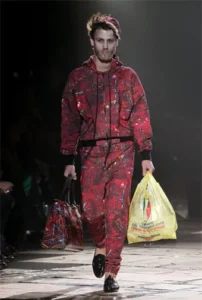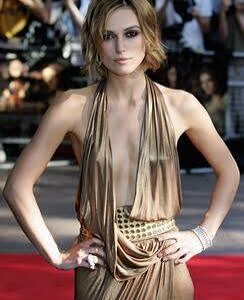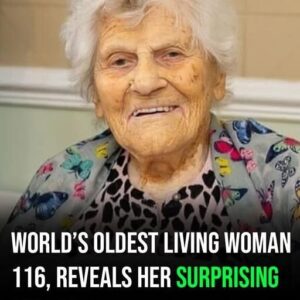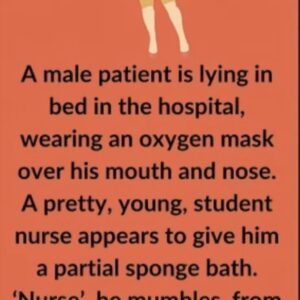
Homelessness and Haute Couture. Sounds hazardous. Apparently not so much to the esteemed British-Spanish fashion designer John Galliano. Nearly 20 years ago, this fashion connoisseur released a “Haute Homeless” Spring/Summer collection for the brand Dior. If the name itself wasn’t able to make you cringe a little, each stride down the runway presented a shocking and stimulating response. The garments were distressed beyond the normal “artistic” treatment and displayed oversized clothing including snow-covered hats and hoods. Models were wrapped in pants made of newspaper. No material left behind! The faces of the models were covered in dirt, wearing presumably expensive, top-of-the-line make-up to give them a fashionably freezing facelift. All the kids are doing it these days.

Galliano wanted to make certain that the audience fully understood his collection through his accessories. The plastic shopping bag in one hand with an overpriced handbag in the other was either a statement or an oversight (people have argued both). But in this show, there’s little that is not controversial. This presentation put a group of people on display that never asked for it, and created a new kind of appropriating all in one, making everyone question how subjective art is really allowed to be.
It could be argued that Galliano is a man of great skill for making the underrepresented highlighted. I said COULD. Maybe this show was an intentional representation of a topic that is uncomfortable and unnoticed. Homelessness, being as prevalent as it is, is not nearly spoken about as much as it seems it should be. People are on the street, seen every day, yet the topic seldom comes up in common conversation. Could it be that Galliano made a show that was actually made to make you uncomfortable, allowing for self-reflection on why it is that you’re so uncomfortable in the first place? Maybe. Or maybe he just appropriated. His comments on the show, “an homage to the homeless men and women he’d seen sleeping alongside the Seine wrapped in layers of newspapers” makes me think the latter.
He sees beauty in all that surrounds him. Who’s to say that’s wrong? Besides the overdraft of people that are unable to self-identify themselves because those that are at the top of the social hierarchy get to shut out the voices of others and speak on their behalf. Just little old them.

It is controversial. There’s no doubt about that. But what’s interesting is the idea of what can and cannot be used to progress an artist’s work. Are they limited to the beautiful things in life? Are they only allowed to display the puppies and rainbows and happy angelic nature of the human race? That seems a little less than the truth. Not that art has to mimic truth. But it does make it a little less useful if all that is presented is fabricated bliss. In the context of this show, Galliano put the “ugly” side of the population on the stage. And people were confused. Where is the beauty in the ugly? The point might just be that there isn’t any. Maybe it is simply a statement about the reaction of the audience.
While he did get some praise from the fashion community for originality and taking inspiration from the most unlikely places (the jury is still up for debate if he really has the right to do this), most of the comments from the outside were backlash. But this conversation that sprouted from this bizarre show was less than helpful. Those that had something to say pointed fingers, but once again did nothing substantial to address the real issue of the prevalence of homelessness. Great. Galliano got the conversation going, followed up with no potential solution, and stirred up controversy amongst people that like to do nothing more but talk about the issue. I say we’re all at fault. But that’s just me.
Galliano defends his line to this day. Never apologizing for the statement he felt was necessary to make. “The critics have a slightly bigoted view. One is allowed to have women mincing about in high heels and combat trousers and a scarf around their head, inspired by the war in Bosnia. One is allowed to be inspired by India, even though there is enormous poverty there. One is allowed to be inspired by Africa, even though the Masai tribe is a disappearing race. One is allowed to have bohemian chic inspired by Gypsies even though we all know now where Gypsies are coming from. I don’t get why, just because this is on their own doorstep, it’s any different. Because they don’t want to know about these people?” So he’s bringing awareness to this issue. Wonderful. Meanwhile, defending most other forms of cultural appropriation. But I guess he wants to be invited to the party even if the party is full of unaware, uninformed, ignorant individuals. A party’s a party.
While the theory of John Galliano single handedly unleashing the ultimate statement on society is optimistic, it has some flaws. One is that the designer himself has said that he discovered the beauty in those that he observes around him, seeming to mute the problem entirely. Is it beautiful? Is it ugly? Does he even see the problem? Get your story straight John.
But more than his specific opinion of why he released this questionable line, what does it mean for us? How we view this appropriation and what it meant for us then and what it means for us now is relevant and important. Appropriation of a cultural group that self identifies themselves on an individual level is one thing. But appropriating a group that is not exactly labeling themselves loud and proud as homeless? That seems to be in an entirely different category. A social issue is not a style.
This term, cultural appropriation, is an interesting one to dissect in terms of this outlandish show. While most people may associate it with the act of taking from a culture that is not your own, those that are homeless are not associating this part of their lives as you would a culture. Galliano instead saw a group of individuals and must have thought, “Man, what a concept. Homeless fashion? Brilliant!”. And then had the oh so bright idea to create an entire collection based on a voiceless group, and in the process create an even larger bridge and an even louder silence. I can’t image why people would be so upset.
Perhaps there was an opportunity for a saving grace. A charitable component if you will. If he’s going to create the show, you would think there would be some sort of a solution put in place for the problem he is so obviously addressing. You thought wrong. Rather than offering any kind of resolution or even so much as a “benefits go to helping the homeless” at the end of his show, Galliano really does nothing more than make poverty into a spectacle. If it’s a show he wanted, it was a show he got.
This performance, if you will, may have opened the doors for other designers to play with the idea of extremely contentious shows. Not only have designers mimicked the “Haute Homeless” look (i.e. Japanese designer Daisuke Obana’s fall 2017 collection) they have also introduced new topics to debate. Attempting to make a statement through a collection was followed 15 years later in Karl Lagerfeld’s runway show for Chanel Spring/Summer 2015. History does find a funny way to repeat itself. Even if the correlation doesn’t seem so obvious at first glance.
While Lagerfeld didn’t have his models wear the controversy, he did have them hold up signs and march in the spirit of feminism to close his show. A moment that changed people’s minds? Or helped sell more clothes? And that’s where the question lies. Can fashion alter peoples’ political and social opinions? Is it their prerogative? I don’t have the answers, but it seems to me that the statement itself isn’t enough to permit the platform to partake in the conversation. If you have something to say, I would hope there would be some actual desire for steps towards change to come out of it.
While there is backlash, Galliano did get let off the hook in the grand scheme of things. He was not blacklisted. He was not shunned from the fashion community. He was not even fired by Dior (not until 2009 anyway). Today, nearly 20 years later, and many scandals in between, he is the creative director of Paris-based fashion house Maison Margiela. Fashion is ever-changing and in constant motion, making little time for consequence where there is real talent. Both him and his decisions may be borderline destructive, but the question of whether or not he is skilled is not so much up for discussion.
So does it matter if there is a possibility for an impact if these shows remain so highly controversial? The message, whatever that may be, has the unfortunate opportunity to get lost if there is an increasing amount of noise surrounding it. The hype sways toward the commentator rather than the comment. John Galliano remains John Galliano. And those that are suffering from homelessness? Great job John, your impact was seen, and left, on the stage. Try again next time. Or don’t.





